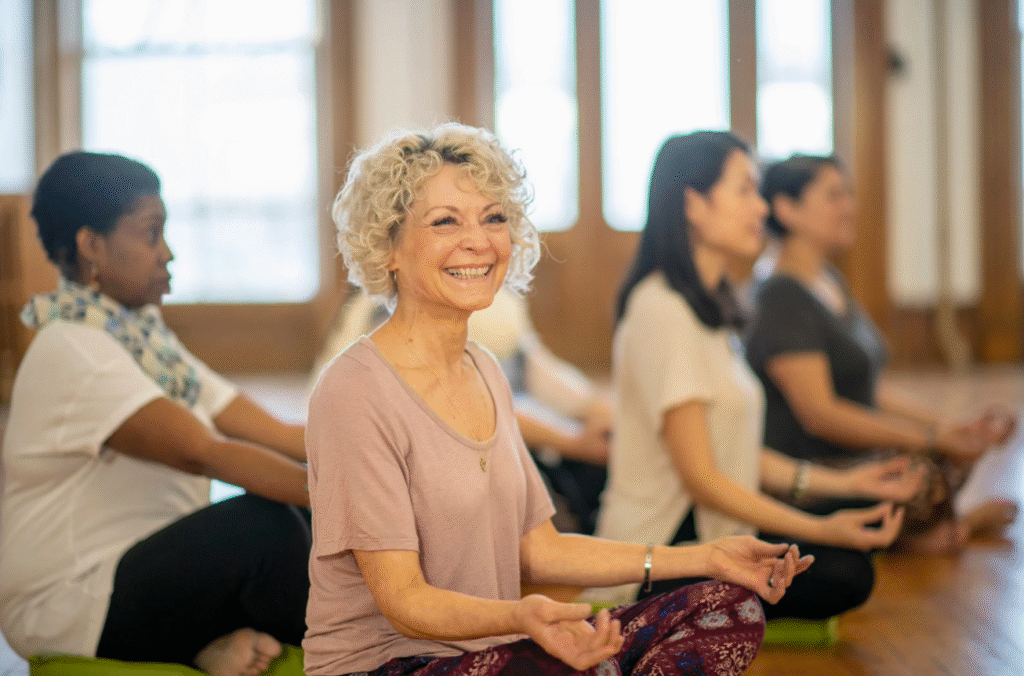
Movement Age: The New Way to Measure How Well You Move
- Dr. Mitch Israel
- Mobility

What’s Your Movement Age?
(Hint: It’s Not the Number on Your Driver’s License)
We all know our chronological age—the birthdays we’ve celebrated. But when it comes to how your body moves and feels, that number doesn’t tell the full story. That’s where Movement Age comes in.
Movement Age is a unique score that shows how old your body moves based on three key factors: Mobility, Function, and Lifestyle. Think of it as a “credit score” for your physical health. The younger your Movement Age, the better your mobility, strength, and overall resilience to do the things you love.
Why Movement Age Matters
You might be 40 years old, but if your body moves like it’s 60, you’ll feel it in the form of stiffness, recurring aches, or slower recovery. On the other hand, I’ve seen patients in their 60s moving like they’re decades younger because they’ve invested in mobility and smart training.
The beauty of Movement Age is that it gives you clarity. Instead of just guessing if your body is wearing down too fast, you get a clear number—and a roadmap for how to improve it.
The 3 Key Factors That Determine Movement Age
1. Mobility Assessment
We test how well your joints move—hips, shoulders, spine, and more. Restricted mobility is one of the earliest signs of accelerated movement aging.
2. Functional Test
Mobility alone isn’t enough. We also look at how you use it in real-world patterns like squatting, balancing, or reaching overhead. If you can’t move smoothly and without pain, your functional age increases.
3. Lifestyle Risk Score
Even if your tests are solid, lifestyle factors matter:
Sitting time
Sleep quality
Strength & mobility training habits
Morning stiffness
Pain with daily movement
These add up to reveal whether your body is trending younger or older than your actual years.
The Science Backs This Up
Research consistently shows that mobility, function, and lifestyle habits are strong predictors of how well we age — both physically and biologically.
Mobility Matters: Studies have shown that reduced joint mobility and stiffness are directly linked to higher fall risk, decreased independence, and accelerated aging in older adults (Veronese et al., Ageing Research Reviews, 2019).
Function is a Predictor of Longevity: Functional movement tests, such as the sit-to-stand or gait assessments, are validated tools for predicting health outcomes and even mortality risk (Brito et al., European Journal of Preventive Cardiology, 2014).
Lifestyle Risks Add Up: Prolonged sitting, lack of strength training, and poor sleep all compound to accelerate biological aging and increase risk for chronic conditions (Booth et al., Journal of Applied Physiology, 2012).
This is why Movement Age isn’t just a concept — it’s a science-backed way to measure how well your body is aging compared to your calendar age. When you combine your mobility assessment, functional testing, and lifestyle risk scoring, you get a complete picture of your true movement health.
Why It’s a Game-Changer
Unlike your chronological age, Movement Age can be reversed. By improving your mobility, training smarter, and improving lifestyle habits, you can literally move and feel younger next year than you do today.
That’s the power of assessing your body beyond symptoms—you find the weak links before they turn into bigger problems.
How to Find Out Your Movement Age
✅ If you’re local to Plymouth, Canton, Northville, Livonia, or Metro Detroit: Book a Yogger Movement Assessment with me, Dr. Mitch Israel, at REACH Rehab + Chiropractic Performance Center. You’ll walk away knowing your Movement Age and exactly how to improve it.
✅ If you’re outside Michigan: You can still calculate and improve your Movement Age with guided programs inside the Mobility Suite. Start with my free Hip Mobility Starter Kit and see results right away.
👉 Click here to get started with the Hip Mobility Starter Kit




